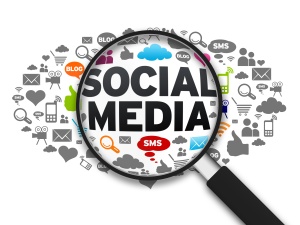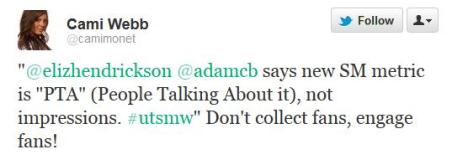 LiveJournal. Friendster. Myspace. Facebook. Early on, social media sites began as online outlets allowing people to express themselves and connect with their friends. It was intriguing, it was experimental, and above all, it was classified personal. Over the years it’s become evident just how public our social media activities are. Recently, a New York Times reporter was reminded of how personal and professional lives are clashing online, by being assigned a “social media babysitter.”
LiveJournal. Friendster. Myspace. Facebook. Early on, social media sites began as online outlets allowing people to express themselves and connect with their friends. It was intriguing, it was experimental, and above all, it was classified personal. Over the years it’s become evident just how public our social media activities are. Recently, a New York Times reporter was reminded of how personal and professional lives are clashing online, by being assigned a “social media babysitter.”
The Jerusalem Bureau Chief for the nation’s most prominent newspaper repeatedly posted messages on her public Facebook profile that her employer found to be problematic. As a result, she will now work closely with an editor on her social media posts.
According her New York Times editor, Margaret Sullivan, “The idea is to capitalize on the promise of social media’s engagement with readers while not exposing The Times to a reporter’s unfiltered and unedited thoughts.”
Watching what we say is not a new topic, but certainly one that bears repeating, as more companies are tracking what their employees post online.
As the employee, it’s important to know your company’s social media policy. If they don’t have a policy – ask for one. Also remember that anything you say online can be tied back to your company, whether you like it or not. Platform Magazine, which included commentary from DVL in its latest issue, advises that before posting on social media to ask yourself, “Would you want your boss to read this?”
As the employer, make sure you have a social media policy in place. From creating these for various clients, DVL knows policies can vary from industry to industry and company to company, so it’s not advised to “borrow” one you find online. There are many factors to consider, such as how an individual engages in social media for a company, how individuals engage in social media on company and personal time, as well as how the National Labor Relations Act and employees’ rights affects a social media policy.
Social networking has evolved from its beginnings and continues to grow, but one thing often holds true online and off – think about what you’re going to say before you say it.
Filed under: Uncategorized | Tagged: agency, Boston Business Journal, dvl, facebook, Friendster, Jerusalem Bureau Chief, LiveJournal, myspace, national labor relations act, new york magazine, new york times, platform magazine, pr, pradical, social media, social media engagement, social media guidelines, social media policy, social networking | Leave a comment »
























